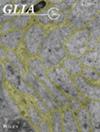摘要
神经胶质抗原递呈细胞(APC)是视网膜内免疫监视的关键调节器,可维持组织平衡并对损伤做出迅速反应。然而,它们在局部协调和激活的复杂机制仍不清楚。我们的研究综合了视网膜损伤的动物模型、人类视网膜的回顾性分析和体外实验,以深入了解视网膜变性(RD)过程中抗原递呈在神经免疫学中的关键作用,揭示了各种胶质细胞,特别是 Müller 胶质细胞和小胶质细胞的参与。神经胶质细胞充当哨兵,检测变性过程中释放的抗原,并通过 MHC 分子与 T 细胞相互作用,这对免疫反应至关重要。小胶质细胞通过 MHC II 类途径充当 APC,上调 Csf1r 和细胞因子等关键分子。相反,Müller 细胞则通过 MHC I 类途径发挥作用,表现出抗原处理基因上调并促进 CD8+ T 细胞反应。不同的细胞因子信号通路,包括 TNF-α 和 IFN I 型,有助于免疫平衡。人类视网膜标本证实了这些发现,显示神经胶质的活化和 MHC 的表达与退行性变化相关。体外试验也证实了T细胞对活化的小胶质细胞和Müller细胞的不同迁移反应,突出了它们在塑造视网膜内免疫环境中的作用。总之,我们的研究强调了视网膜胶质细胞在视网膜实质受到损伤后参与调节免疫反应。揭示 RD 中神经胶质细胞介导的抗原递呈的复杂性对于开发针对视网膜病变的精确治疗干预措施至关重要。

Glia antigen-presenting cells (APCs) are pivotal regulators of immune surveillance within the retina, maintaining tissue homeostasis and promptly responding to insults. However, the intricate mechanisms underlying their local coordination and activation remain unclear. Our study integrates an animal model of retinal injury, retrospective analysis of human retinas, and in vitro experiments to gain insights into the crucial role of antigen presentation in neuroimmunology during retinal degeneration (RD), uncovering the involvement of various glial cells, notably Müller glia and microglia. Glial cells act as sentinels, detecting antigens released during degeneration and interacting with T-cells via MHC molecules, which are essential for immune responses. Microglia function as APCs via the MHC Class II pathway, upregulating key molecules such as Csf1r and cytokines. In contrast, Müller cells act through the MHC Class I pathway, exhibiting upregulated antigen processing genes and promoting a CD8+ T-cell response. Distinct cytokine signaling pathways, including TNF-α and IFN Type I, contribute to the immune balance. Human retinal specimens corroborate these findings, demonstrating glial activation and MHC expression correlating with degenerative changes. In vitro assays also confirmed differential T-cell migration responses to activated microglia and Müller cells, highlighting their role in shaping the immune milieu within the retina. In summary, our study emphasizes the involvement of retinal glial cells in modulating the immune response after insults to the retinal parenchyma. Unraveling the intricacies of glia-mediated antigen presentation in RD is essential for developing precise therapeutic interventions for retinal pathologies.

 求助内容:
求助内容: 应助结果提醒方式:
应助结果提醒方式:


